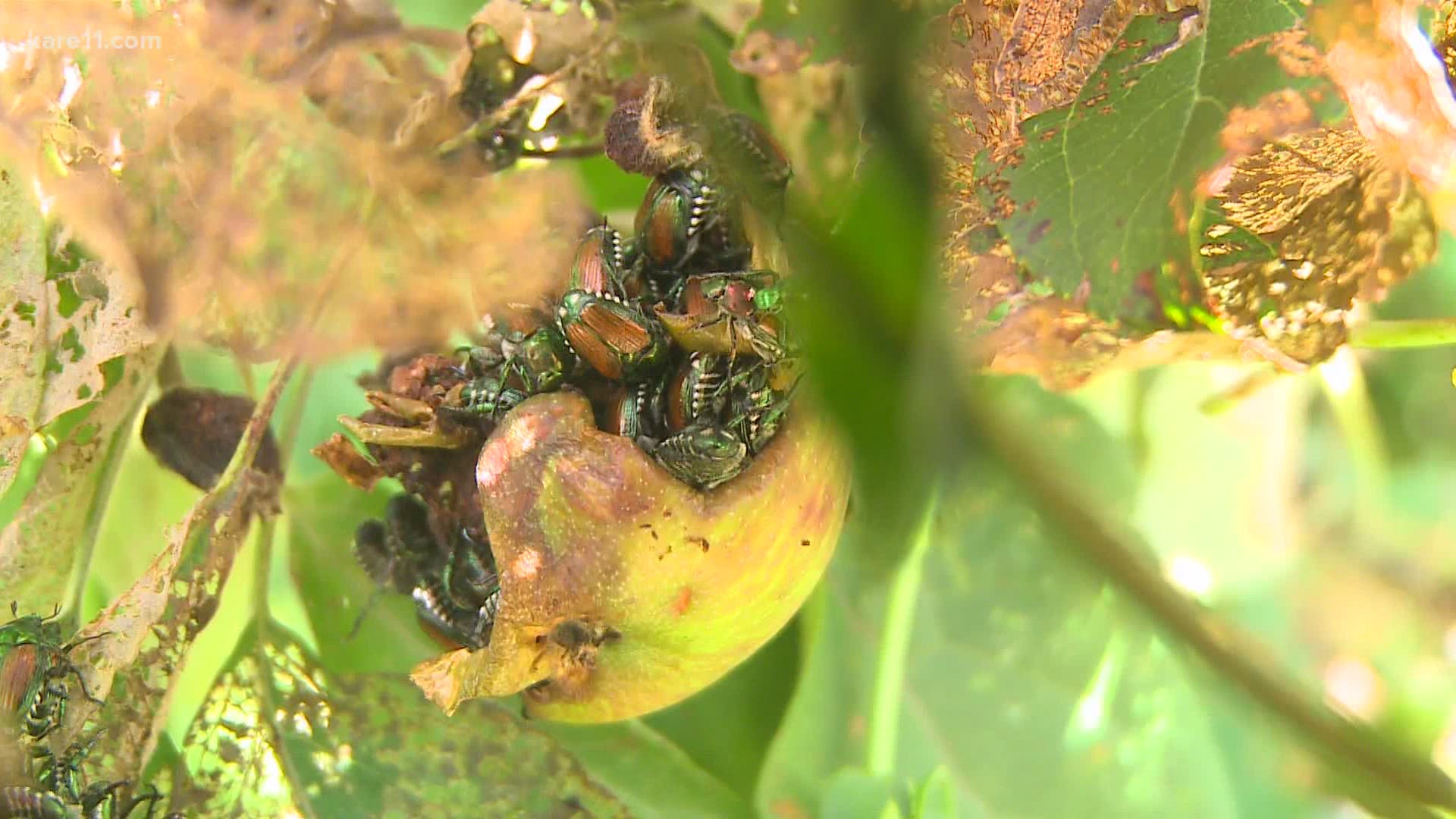Japanese beetles are back.
You can tell them apart from other bugs by their metallic green bodies with coppery iridescent wing covers.
But the sure sign there are Japanese beetles in your yard is the damage they leave behind. They eat the leaves between the vein, which leaves behind a skeleton or lacy appearance on your plants.
They are known to love more than 300 varieties of plants and trees including holly hocks, roses and grapes.
We do, however know several plants that are resistant to Japanese beetles, like red maple, dogwood and juniper.
So what do you do about them? You can spray with an insecticide, but many will also harm the good bugs that come to your plants, like bees. Here are some other options from the University of Minnesota Extension and the Minnesota DNR., including this homeowners Japanese beetle handbook!
The best thing to do is a bit labor intensive. By hand, pick off the bugs and drop them into a container of soapy water. Then dispose of them after they're dead. Avoid squishing them or using the popular bags to trap them. In both cases, the beetles release pheromones that attract even more of their kind to your yard.
Preventing them in the first place is also tricky.
Applying grub control to your yard is really only practical if the grubs are creating damage to your lawn, since the beetles can simply fly in from elsewhere for lunch at your house.
The bottom line is that these little buggers are here to stay and managing them is the key. We won't completely get rid of them.
MORE GROW WITH KARE:

